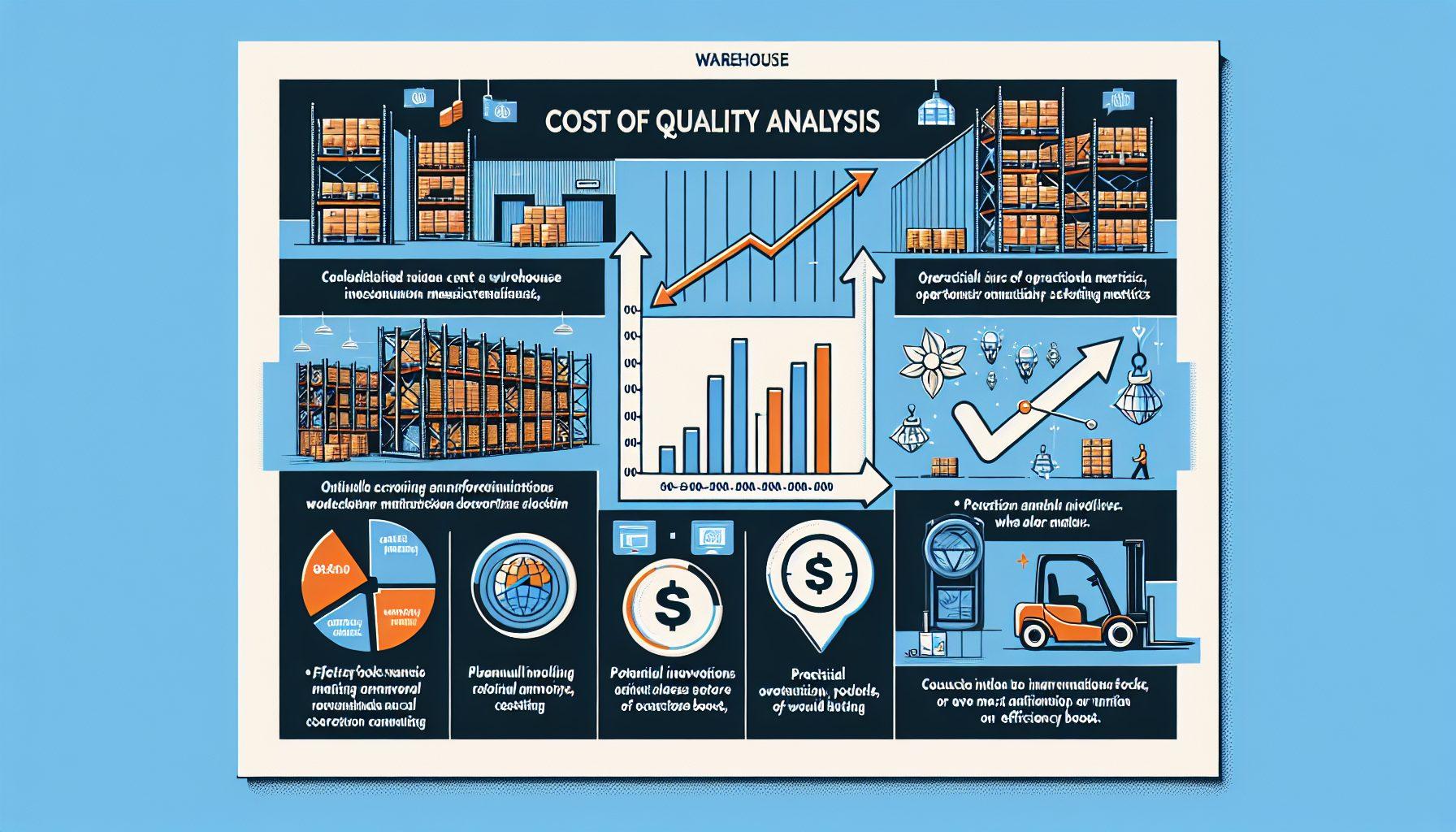Warehouse operations can be complex and costly, with various factors contributing to the overall expenses. To effectively manage and optimize these costs, conducting a warehouse cost of quality analysis is crucial. By analyzing the different elements that impact the cost and quality within a warehouse, businesses can identify areas for improvement and make informed decisions to enhance productivity and profitability.
The Importance of Warehouse Cost of Quality Analysis
A warehouse cost of quality analysis is a comprehensive review of all the expenses associated with running a warehouse operation. It involves analyzing and evaluating various cost components, including labor, equipment, inventory, maintenance, and quality assurance processes. By conducting this analysis, businesses gain a holistic understanding of their warehouse expenses and can identify opportunities for cost reduction and process improvement.
One of the primary benefits of conducting a cost of quality analysis is the ability to uncover hidden costs. Many businesses overlook certain expenses that could be impacting their bottom line. These hidden costs may stem from inefficient processes, subpar quality control, redundant activities, or underutilized resources. By conducting a thorough analysis, businesses can identify these costs and devise strategies to address them.
Another important aspect of a warehouse cost of quality analysis is evaluating quality-related expenses. Quality issues can lead to product defects, customer returns, and rework, all of which can significantly impact a company’s profitability. By identifying quality-related costs, businesses can implement measures to improve product quality, reduce waste, and enhance customer satisfaction.
Moreover, a warehouse cost of quality analysis enables businesses to identify opportunities for process optimization and efficiency. By evaluating current workflows, resource allocation, and utilization, companies can identify bottlenecks, eliminate redundancies, and streamline operations. This, in turn, leads to improved productivity, reduced costs, and increased customer satisfaction.
The Steps to Conduct a Warehouse Cost of Quality Analysis
Now that we understand the importance of a warehouse cost of quality analysis, let’s explore the steps involved in conducting one:
1. Define the Scope: Start by clearly defining the scope of the analysis. Determine the specific areas, processes, and activities that will be included in the analysis. This could include labor costs, equipment maintenance, inventory management, quality control procedures, and more.
2. Gather Data: Collect relevant data from various sources within the warehouse. This can include financial records, operational reports, employee feedback, customer complaints, and other relevant documentation. Ensure that all data is accurate and comprehensive to gain meaningful insights.
3. Categorize Costs: Classify the collected data into different cost categories. This could include direct costs (e.g., labor, equipment, raw materials) and indirect costs (e.g., utilities, rents). It’s also important to categorize costs based on quality-related expenses, such as rework, scrap, and warranty claims.
4. Analyze Costs: Once the data is categorized, analyze the costs to identify trends, patterns, and areas of concern. Look for cost outliers, high-cost activities, and potential cost-saving opportunities. Utilize data visualization tools or spreadsheet software to effectively analyze and present the findings.
5. Identify Quality Issues: Evaluate the quality-related costs within the warehouse. Identify the root causes of quality issues and determine their financial impact. This can include analyzing customer returns, warranty claims, and rework costs. Identify areas for improvement in quality control processes and implement corrective actions.
6. Benchmark and Compare: Compare your warehouse’s cost of quality with industry benchmarks or similar warehouses to evaluate its performance. This helps identify areas where your warehouse may be lagging behind or excelling. Benchmarking also allows you to set realistic goals and track progress over time.
7. Develop Improvement Strategies: Based on the analysis and findings, develop improvement strategies to reduce costs and enhance quality in the warehouse. This could involve process optimization, training programs, technology investments, or reevaluating supplier relationships. Prioritize the strategies based on their potential impact and feasibility.
8. Implement and Monitor: Implement the identified improvement strategies and closely monitor their impact on the warehouse’s cost of quality. Regularly assess the progress and make adjustments as needed. Continuously monitor key performance indicators (KPIs) to ensure sustained improvement.
In conclusion, conducting a warehouse cost of quality analysis is crucial for optimizing warehouse operations. It helps businesses uncover hidden costs, improve quality control processes, identify areas for process optimization, and enhance overall profitability. By following the steps outlined above, businesses can gain valuable insights and make data-driven decisions to improve their warehouse performance.
If you’re looking for expert guidance in conducting a warehouse cost of quality analysis, consider partnering with HCO Innovations. With their extensive experience and specialized solutions, they can help you optimize your warehouse operations, boost productivity, and reduce costs. Learn more about their warehouse cost analysis services here.

